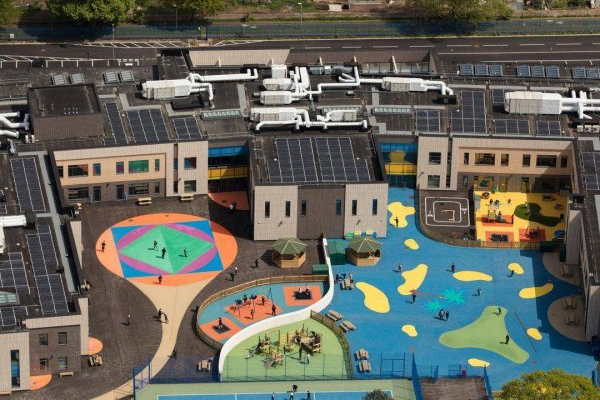Synthetic Surfaces are common throughout the world of athletics – both professionally and in the amateur space. While this may at first appear to be a simple aesthetic choice, upon closer reflection and after considering their characteristics, it’s clear that synthetic surfaces are the ideal surface for runners.
There are three main reasons why synthetic surfaces have overtaken ‘natural’ ones as the surface of choice for running.
Reason 1. Synthetic Surfaces Are Flat
Synthetic surfaces and MUGA pitches are famously flat and follow the general elevation of the ground very closely. This makes them ideal for beginner runners because many sudden and subtle elevation changes can tire a runner out very quickly. Uneven surfaces can even be a risk of serious injury depending on the runner’s ability.
This more consistent surface also makes them ideal for spaces — such as park footpaths or a school surface — where young children will be running around a lot. Because young people’s coordination hasn’t been properly developed yet, it’s quite common for them to fall over. As synthetic surfaces are largely flat, young children find it much easier to run on these surfaces and not fall over. And thanks to the relative softness of synthetic materials (in comparison to concrete) any injuries have a higher likelihood of being superficial.
Reason 2. Synthetic Surfaces are Durable
Concrete is a very brittle material considering its toughness, with only a modicum of force (compared to its ability to absorb compression forces) being required to break off a section. For example, while a concrete wall may be rated to withstand 35,000lb in compression pressure, that same wall only needs around 350lbs of tensile pressure per inch to break off a section.
As such, it’s very easy for concrete surfaces to become damaged very quickly — especially taking into account the effect that weather can have. This lack of durability can have serious implications in certain situations where health and safety are paramount, such as a school surface, or in situations where the longevity of the product is a key consideration — such as park footpaths. In contrast, synthetic surfaces and MUGA pitches are much more durable, able to withstand a far greater amount of kinetic force before breaking or becoming misshapen, meaning they can last for far longer.
Reason 3. Synthetic Surfaces Don’t Change Through the Year
Traditional surface materials have one major weakness that synthetic surfaces do not: the weather.
Weather can have a massive impact on traditional road surfaces. During the colder months, the shift in temperature can cause the concrete and asphalt to swell and shrink depending on the time of day and temperature. This causes stress fractures to slowly develop in the surface’s substrate, ultimately leading to potholes if left untreated — which requires the surface to be resurfaced.
As well as gradual swelling and the threat of damage, the presence of water and ice on the surface makes it inherently dangerous to run on, especially if the runner’s shoes have little to no grip — making it not ideal for use cases such as park footpaths and school surfaces.
In contrast, synthetic surfaces, MUGA pitches, and asphalt materials are more resistant to swelling than concrete. They remain in the shape they’ve been set in unless subjected to very high temperatures. This, combined with their durability, means that they don’t need as much maintenance as concrete-based surfaces. It also makes them much safer to run on during the heights of summer and winter.
Take Your Project to the Next Level Us Today
Both Natratex Cotswold and NatraTex Colour offer outstanding durability, are conveniently maintenance-free, and are second to none in their appearance, creating aesthetically pleasing routes for runners, cyclists and walkers.
As well as athletics and sports surfacing, NatraTex’s coloured tarmac products can be used for a variety of purposes, including decorative footpaths, bus lanes, garden paths, and a wide range of other decorative hard landscape fixtures. Our products fit seamlessly into your landscape design.
For more information on how Natratex products can be used to take your project to the next level — whether you’re redoing a school surface, a park footpath, or applying decorative paving — call NatraTex at your leisure today.
Can't See Your Question?
Ask Us >





